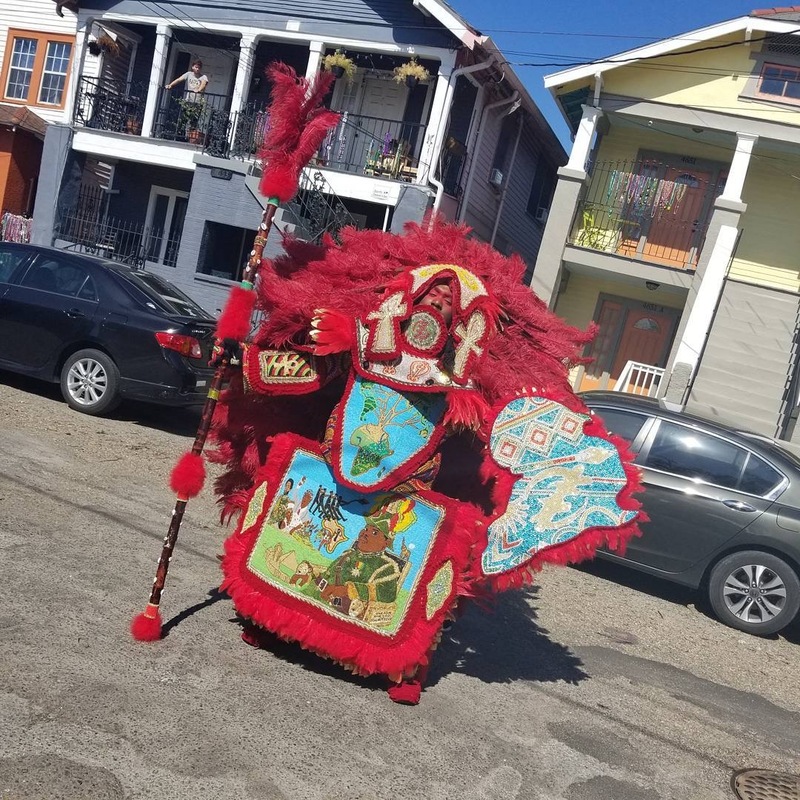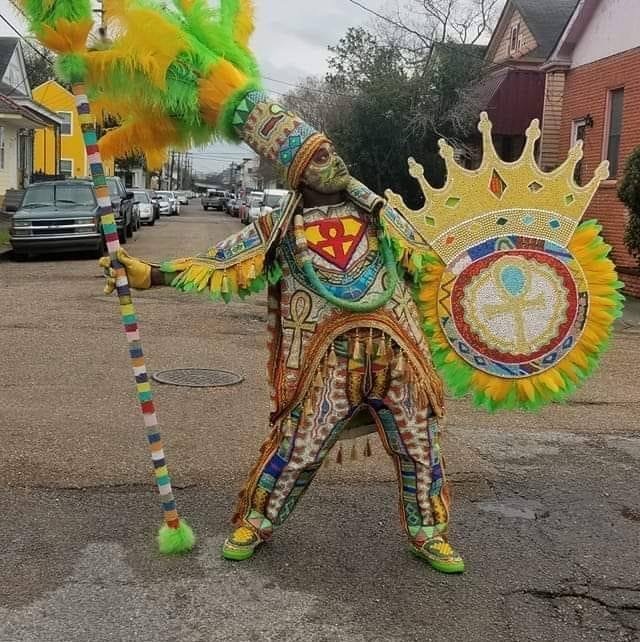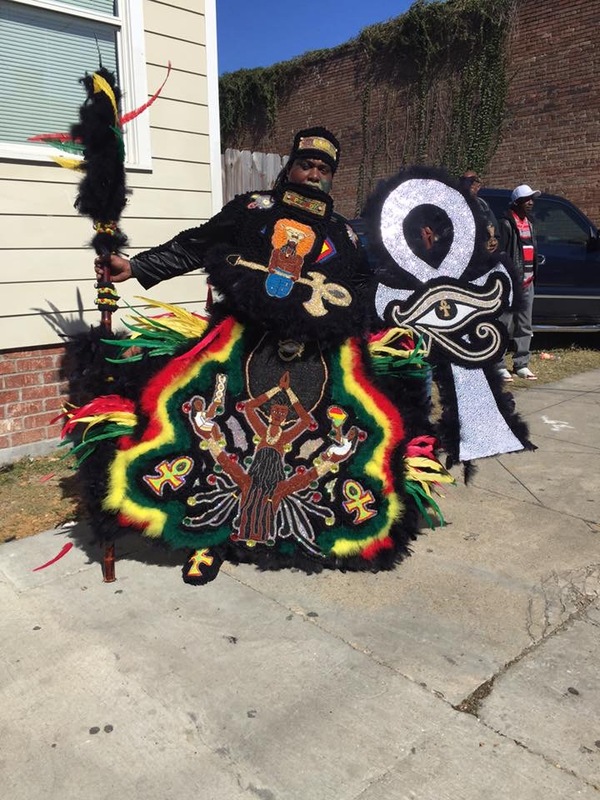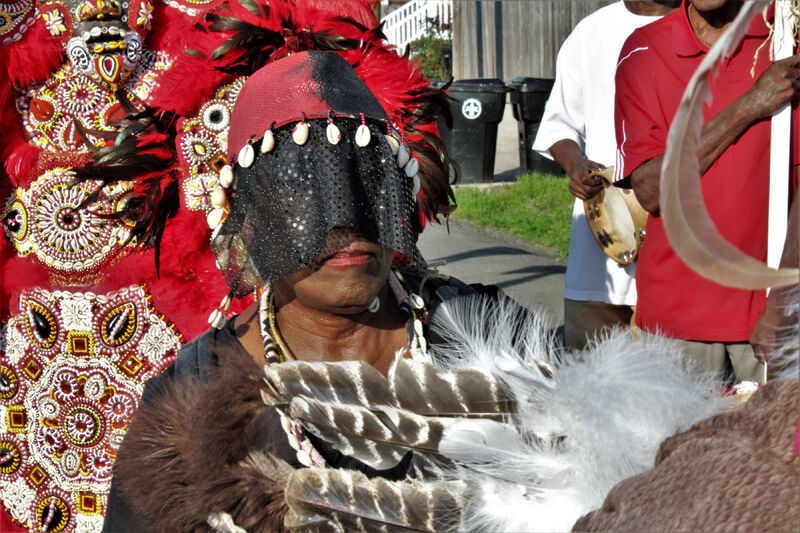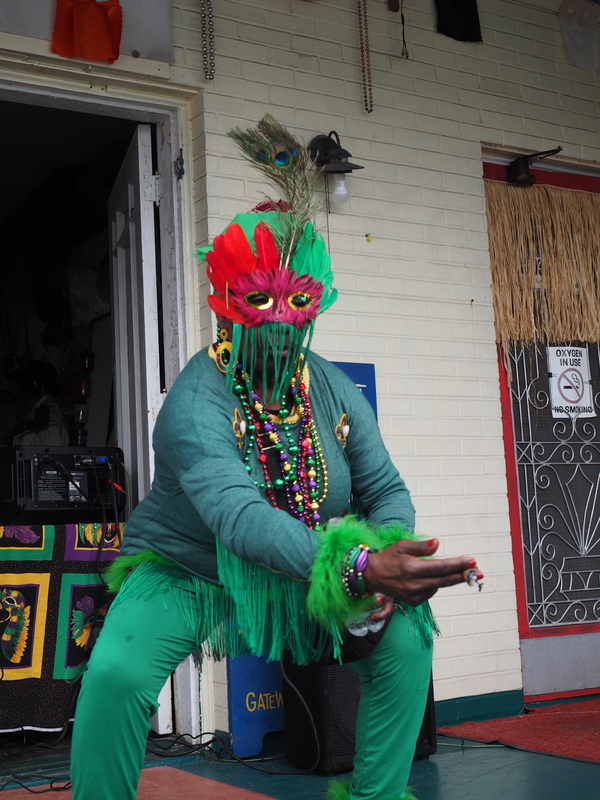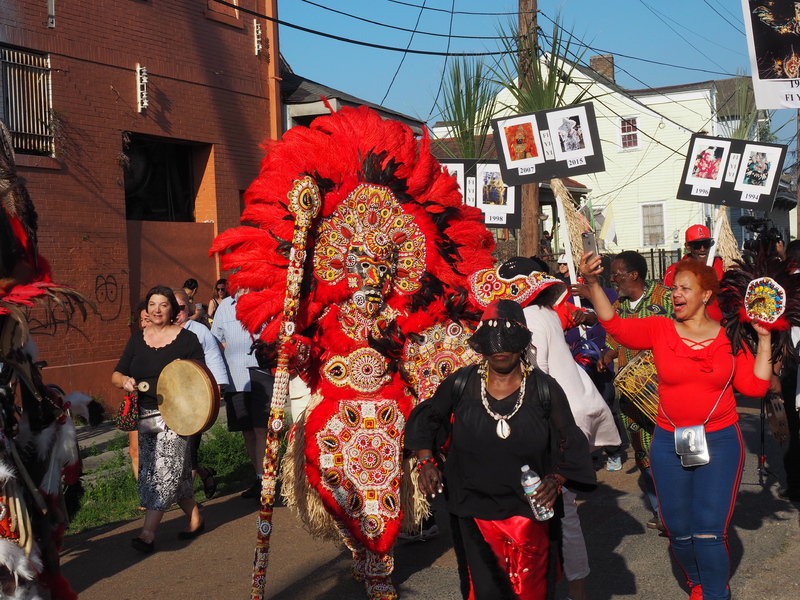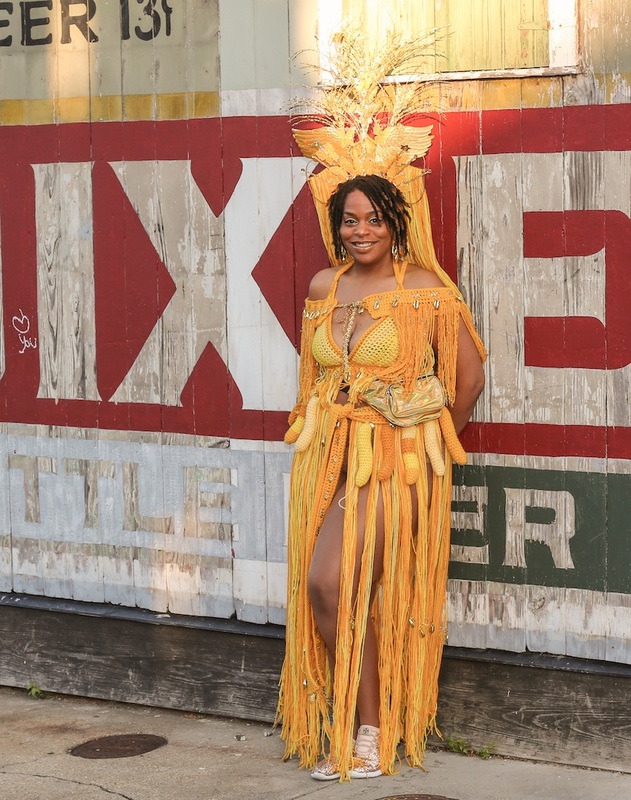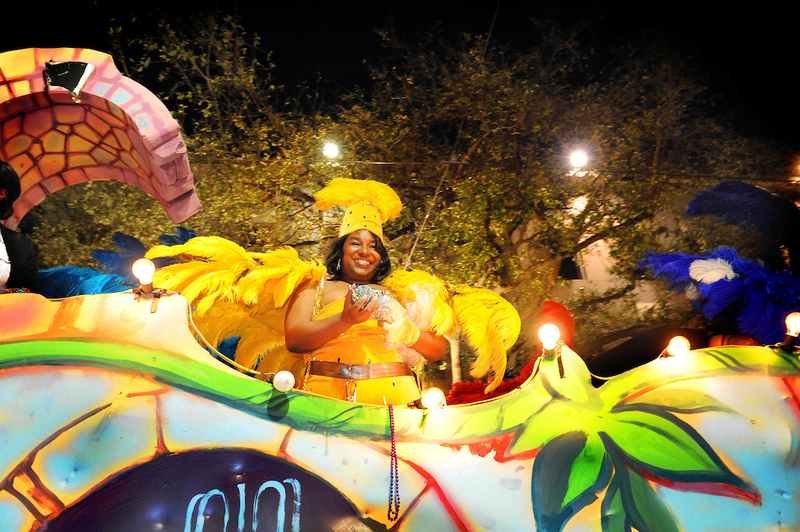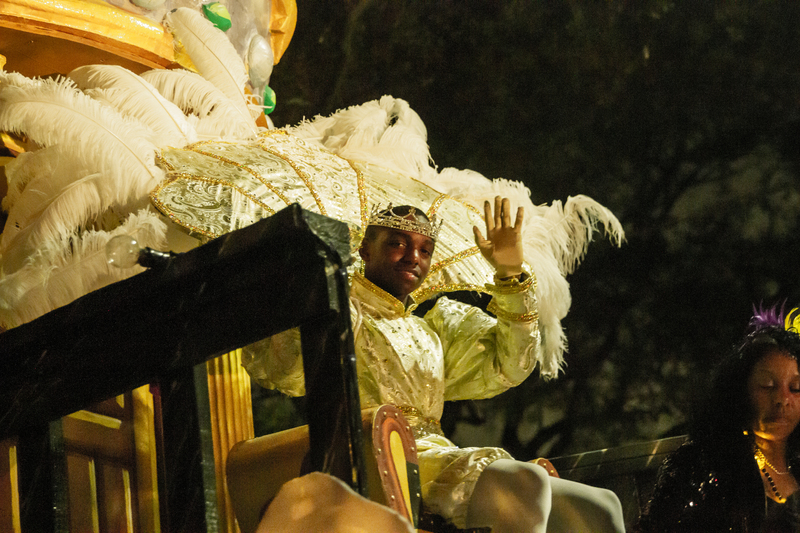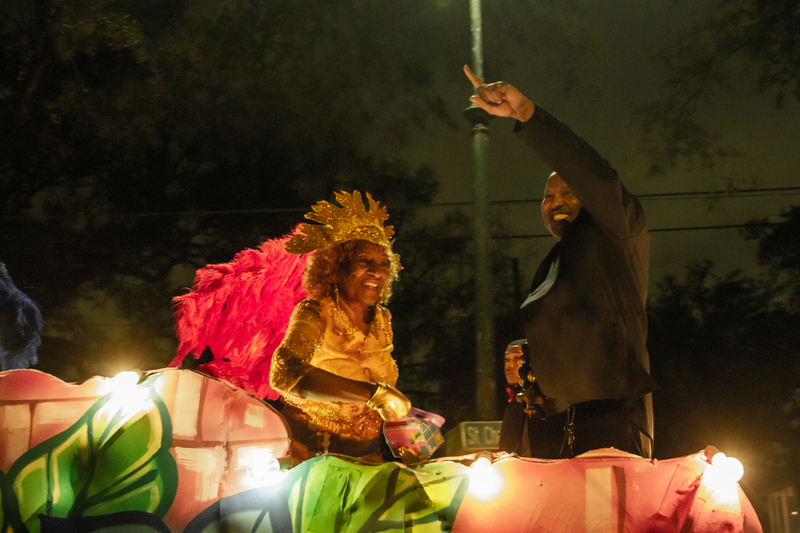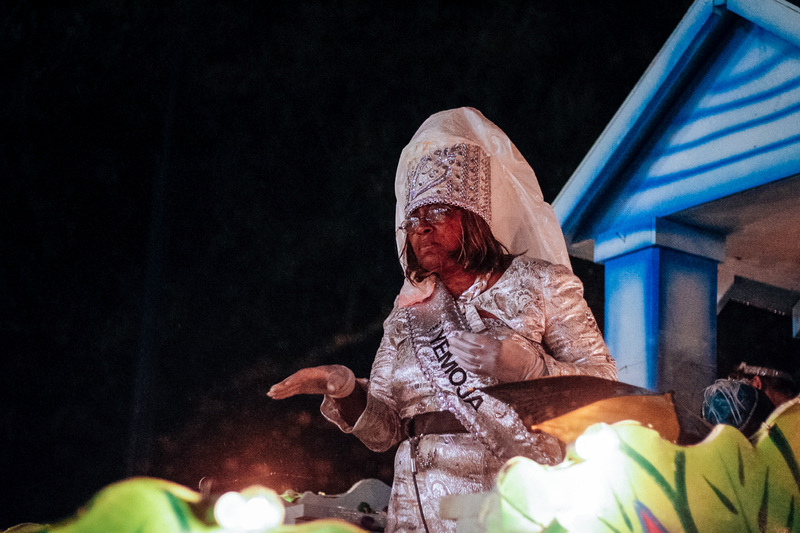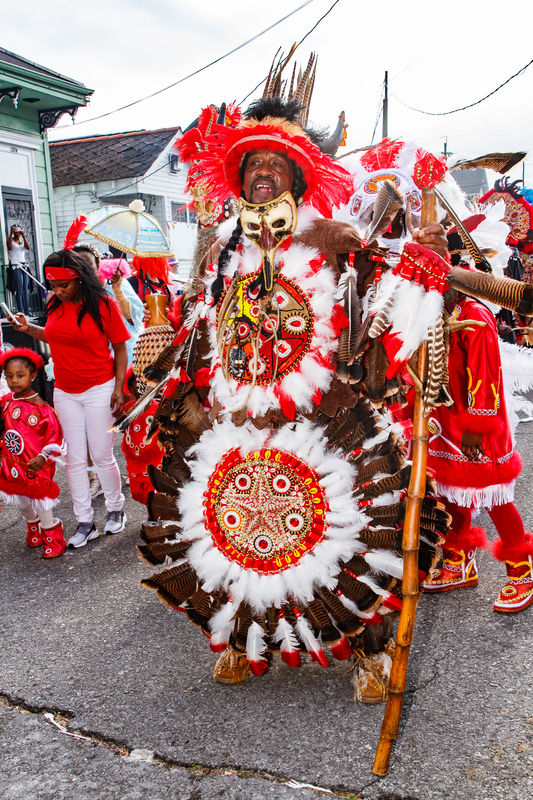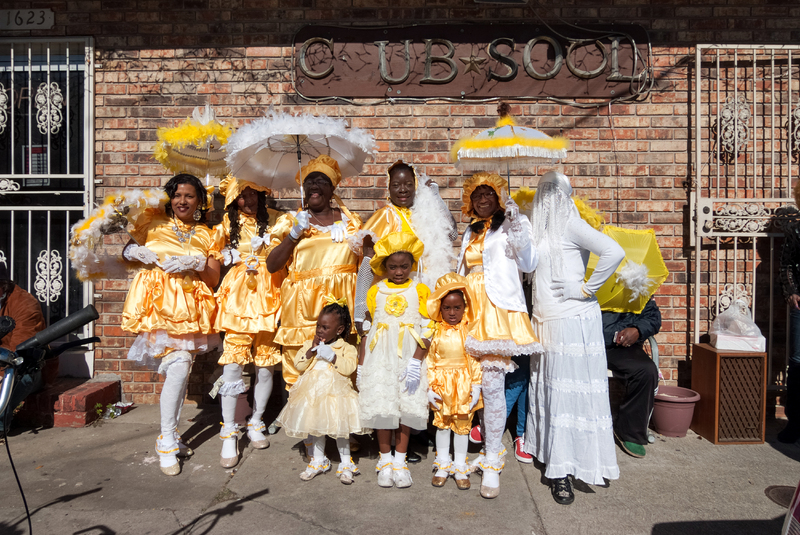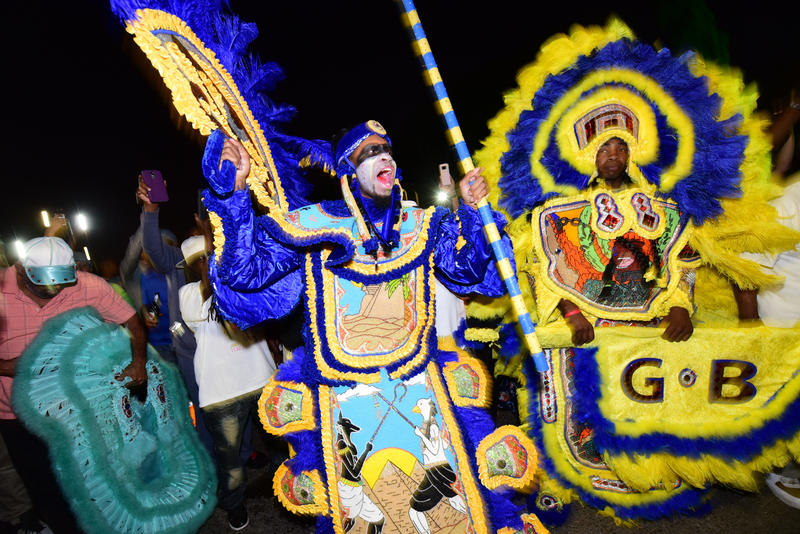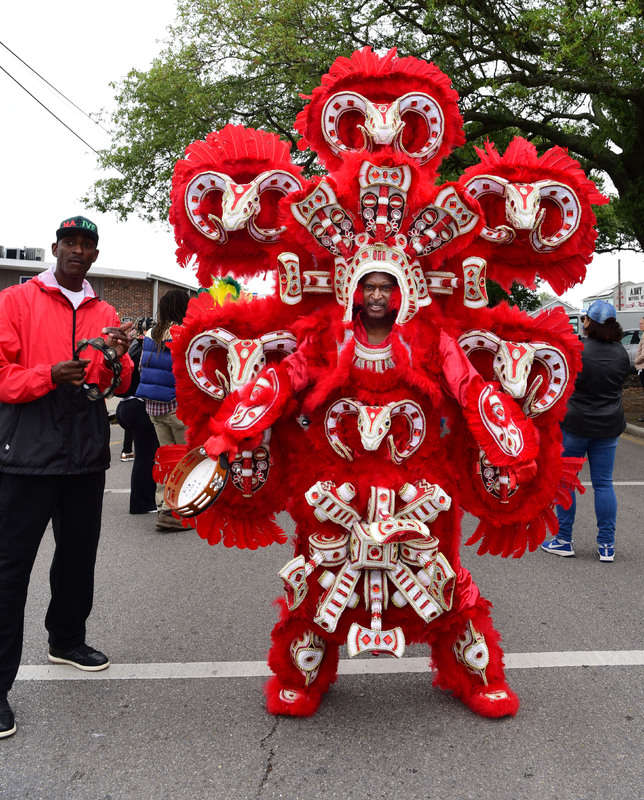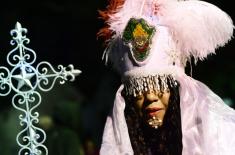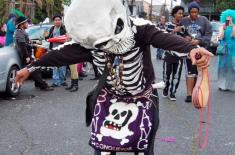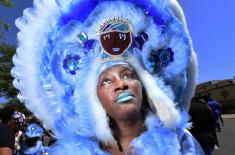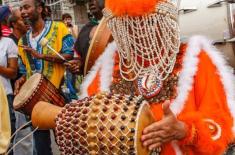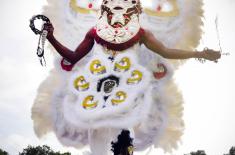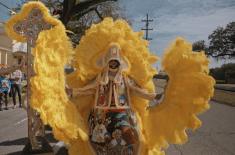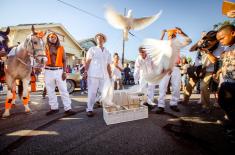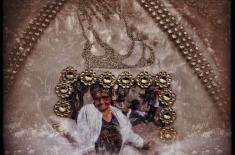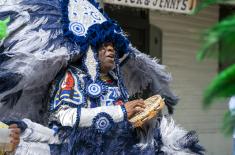African Influences on Black Masking
Mystery in Motion: African American Spirituality in Mardi Gras
Although Islam and Christianity are widespread throughout Africa, each ethnic group also has its own religion. Numerous traditional religions are still practiced across the continent, such as that of the Yoruba people, one of Nigeria’s largest ethnic groups. What many of these belief systems share is a faith that both cosmology and the natural world consist of spiritual forces and a conviction that ancestors communicate with the living. Many of these belief systems also put great emphasis on active divine intervention in everyday life.
The corresponding African religious ceremonies are often communal and performative, involving music, dancing, chanting, singing, and masquerading, resulting in participants experiencing spiritual embodiments and transformations. These religions and worship practices are foundational attributes of Black spirituality in New Orleans, and aspects of this devotional style have made their way into carnival traditions. In addition, many maskers observe African religious practices in their lives and use Mardi Gras to express this publicly.
The Mystic Medicine Man of the Golden Feather Hunters telegraphs his Congo roots by incorporating the word nganga, the Congo term for herbalist and spiritual healer, on his suits. The Spirit of Fi Yi Yi and the Mandingo Warriors was founded to connect with African masquerading traditions. They have introduced a new suited position, the Yoruba orisha Elegba, who rules over communication and crossroads. In addition, individual maskers find ways to include their devotion in their attire. One example is Dow Edwards, who wore a suit in homage to Shango as Spy Boy of the Mohawk Hunters.
Many other contemporary Black maskers look to traditional Yoruba religion for inspiration. The West African Yoruba pantheon of deities are called orishas, or spirits. These spirits have vivid personalities, rituals, songs, and dances that define them. In adapting a European parading tradition, the Krewe of Oshun, a secular parading group, adopted the Yoruba orisha Oshun, whose domain is love and intimacy. The krewe’s queen is called Oshun, and her consort king represents the orisha Shango.
African sacred imagery is noted and disseminated from many other sources, including the Bible and popular culture. In particular, Psalm 68:31 served as a powerful stimulant for pan-Africanism, with its prophecy that "princes shall come out of Egypt and Ethiopia shall soon stretch out her hands unto God.” Pan-Africanist and Black Power activists adopted Egyptian iconography. Floyd Edwards, Spy Boy of the Golden Eagles, has featured on his suits the ankh, an Egyptian symbol of physical and eternal life. The all-women Krewe of Nefertiti, a secular parading group, highlights the beauty and leadership of the African queen who was responsible for the daily rebirth of the cosmos in her deified role. These maskers transform Mardi Gras and its meaningfulness as they become walking sanctuaries of faith.
Mystery in Motion: African American Spirituality in Mardi Gras
Online Exhibition
